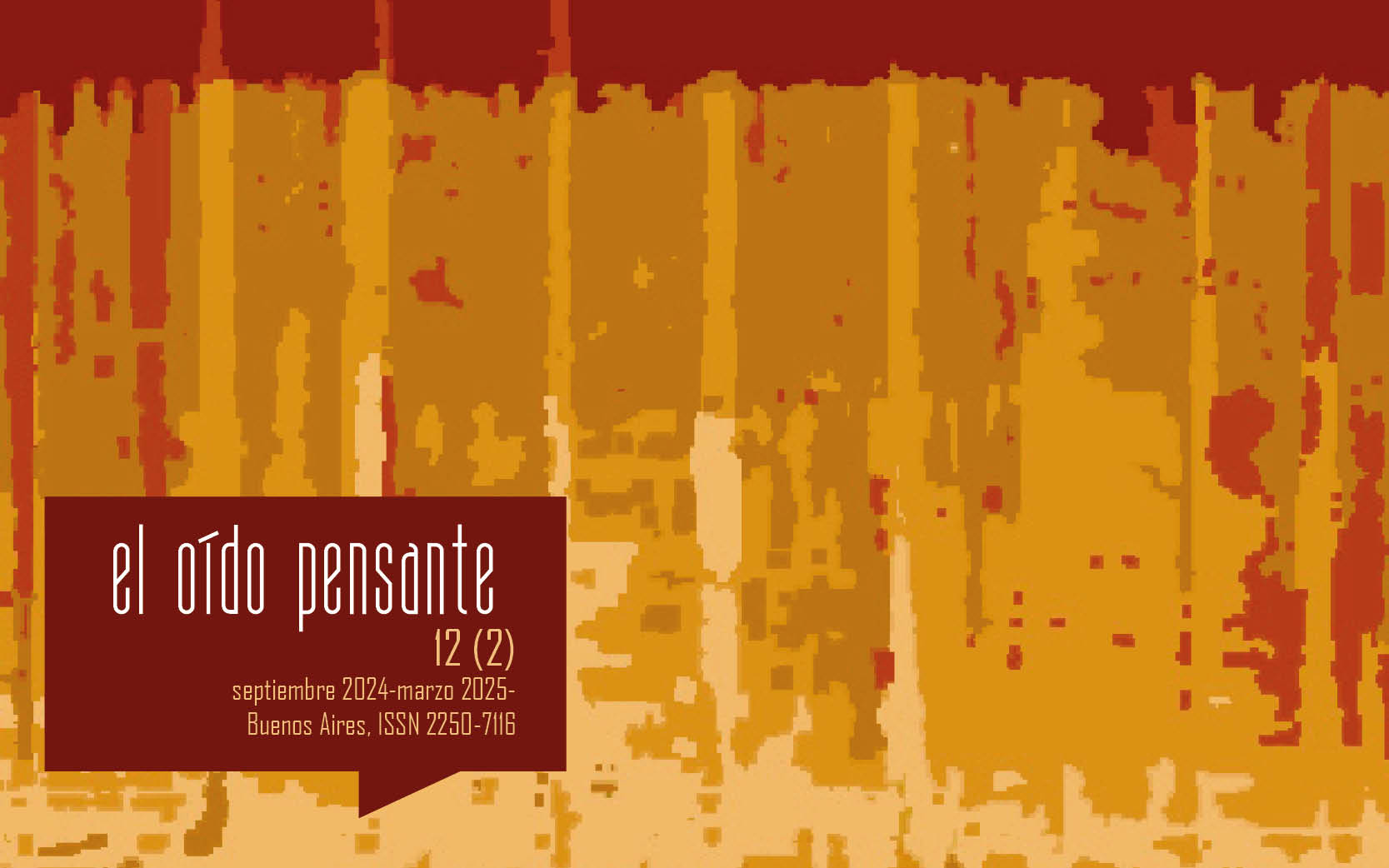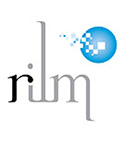Preservation and Foresight: Proposal of a Model for Adaptability and Reinterpretation of Electroacoustic Works with Real-time Signal Processing
Abstract
Electroacoustic music with real-time signal processing, also known as live electronics, faces significant challenges in terms of its sustainability, meaning its ability to endure and be reinterpreted in the future. These challenges are linked to the technological nature of the works. Many rely on specific technologies that could become obsolete, lack information for migration to new technologies, and do not have adequate notation systems to ensure their reinterpretation. This could result in the permanent loss of some musical compositions. The article aims to address these issues and suggest creating a systematic model of the elements of such a work to contribute to preserving electroacoustic music with real-time signal processing.Downloads
References
Battier, M. (2004). Electroacoustic Music Studies and the danger of Loss. Organised Sound, 9(1), 47-53. https://doi.org/10.1017/s135577180400007x
Bernardini, N. y Vidolin, A. (2005). Sustainable Live Electroacoustic Music. Recuperado de https://www.academia.edu/16348988/Sustainable_live_electro_acoustic_music
Berweck, S. (2012). It Worked Yesterday: On (re)performing Electroacoustic Music. (Tesis de Ph.D.). University of Huddersfield, West Yorkshire, Inglaterra.
Bonardi, A., y Barthélemy, J. (2008). The Preservation, Emulation, Migration, and Virtualization of Live Electronics for Performing Arts. Journal On Computing And Cultural Heritage, 1(1), 1-16. https://doi.org/10.1145/1367080.1367086
Bonardi, A., Lemouton, S., Pottier, L. y Warnier, J. (2020). Archivage Collaborative et Préservation Créative. Recuperado de http://preservation.afim-asso.org/lib/exe/fetch.php?media=gdt-preservation.rapportfinal.v1.4.pdf
Bosma, H. (2005). Documentation and Publication of Electroacoustic Compositions at NEAR. Recuperado de http://www.ems-network.org/IMG/EMS05-Bosma.pdf
Boutard, G. (2013). Preserving the Intelligibility of Digital Archives of Contemporary Music with Live Electronics: A Theoretical and Practical Framework. (Tesis de Ph.D.). McGuill University, Montreal, Canadá.
Boutard, G., Guastavino, C., y Turner, J. (2013). A Digital Archives Framework for the Preservation of Cultural Artifacts with Technological Components. International Journal Of Digital Curation, 8(1), 42-65. https://doi.org/10.2218/ijdc.v8i1.237
Cabezas, E. (2000). La descripción archivística y su aplicación en documentos particulares: el caso del Álbum de Figueroa. Diálogos Revista Electrónica de Historia, 1(2). https://doi.org/10.15517/dre.v1i2.20950
Canazza, S., y Vidolin, A. (2001). Introduction: Preserving Electroacoustic Music. Journal of New Music Research 30(4), 289–293. https://doi.org/10.1076/jnmr.30.4.289.7494
Carvajal, A. (2002). Teorías y modelos: Formas de representación de la realidad. Comunicación, 12(001), 1-15.
Coenen, A. (1997). NEAR – The Netherlands Electro-Acoustic Repertoire Centre. Organised Sound, 2(1), 19-21. https://doi.org/10.1017/s1355771897000046
Chadabe, J. (2001). Preserving Performances of Electronic Music. Journal Of New Music Research, 30(4), 303-305. https://doi.org/10.1076/jnmr.30.4.303.7485
Gerzso, A. (2015). The Longevity of Musical Works for Instruments and Electronic Music in the Digital Era. Cahier Louis-Lumière, 9(1), 29-34. https://doi.org/10.3406/cllum.2015.962
Lee, B. (2006). Issues Surrounding the Preservation of Digital Music Documents. Archivaria, 50, 193-204.
Lemouton, S., Bonardi, A., Pottier, L., y Warnier, J. (2018). On the Documentation of Electronic Music. Computer Music Journal, 42(4), 41-58. https://doi.org/10.1162/comj_a_00486
Nogueira, A., Macedo, R., & Pires, I. (2016). Where contemporary art and contemporary music preservation practices meet: The case of Salt Itinerary. Studies in Conservation, 61(sup2), 153-159. https://doi.org/10.1080/00393630.2016.1188251
Nogueira, A. (2023). ¡¿El papel?! ¿Qué papel? El papel del papel en el contexto de los estudios de preservación del patrimonio en la era postindustrial. Ge-Conservacion, 24(1), 185-194. https://doi.org/10.37558/gec.v24i1.1272
Polfreman, Sheppard y Dearden (2005). Re-wired: Reworking 20th Century Live Electronics for Today. International Computer Music Conference, 2, 41-44.
Teruggi, D. (2001). Preserving and Diffusing. Journal Of New Music Research, 30(4), 403-405. https://doi.org/10.1076/jnmr.30.4.403.7487
Teruggi, D. (2004). Electroacoustic Preservation Projects: How to Move Forward. Organised Sound, 9(1), 55-62. https://doi.org/10.1017/s1355771804000081
Wetzel, D. B. (2006). A Model for the Conservation of Interactive Electroacoustic Repertoire: Analysis, Reconstruction, and Performance in the Face of Technological Obsolescence. Organised Sound, 11(3), 273-284. https://doi.org/10.1017/s1355771806001555
Zattra, L. 2007. The Assembling of Stria by John Chowning: A Philological Investigation. Computer Music Journal 31(3), 38-64.
Zattra, L. (2013). Les Origines du Nom de RIM (Réalisateur en Informatique Musicale). Actes des Journées d’Informatique Musicale, 113-120.
Zattra, L. (2018a). Collaborating on composition: The role of the musical assistant at IRCAM, CCRMA and CSC. En F. Sallis, V. Bertolani, J. Burle, y L. Zattra (Eds.), Live-Electronic Music. Composition, Performance and Study (pp. 59-80). Routledge. ISBN: 9781138022607, eBook: 9781315776989.
Zattra, L. (2018b). Symmetrical Collaborations. Jonathan Harvey and his computer music designers. Nuove Musiche, 4, Special issue on Jonathan Harvey (C. Felici & S. Lombardi Vallauri, Eds.), 29-57. Pisa: Pisa University Press. https://doi.org/10.12871/97888333922572
Zattra, L. (2022). Collaborative Creation in Electroacoustic Music Practices and Self-Awareness in the Work of Musical Assistants Marino Zuccheri, Alvise Vidolin, and Carl Faia. En J. Impett (Ed.), Sound Work: Composition as Critical Technical Practice, pp. 261-278. Leuven University Press / Orpheus Institute.























